#nordic bronze age
Video
me when i am listening to RECONSTRUCTED BRONZE AGE LURS
965 notes
·
View notes
Text
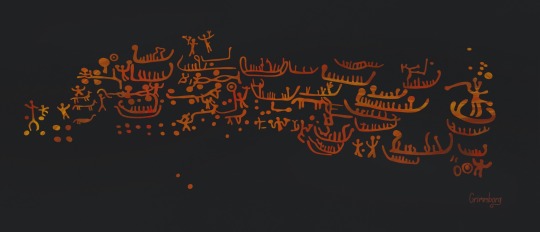
Solberg Rock Carvings
The lower field of petroglyphs from Solberg in Sarpsborg, Norway. They are around 3000 years old, from the nordic bronze age.
#bronze age#petroglyph#petroglyphs#rock carving#Nordic Bronze Age#Norway#sarpsborg#archaeology#artists on tumblr#Nordic#Scandinavia
317 notes
·
View notes
Text
Hällristningar / Petroglyphs
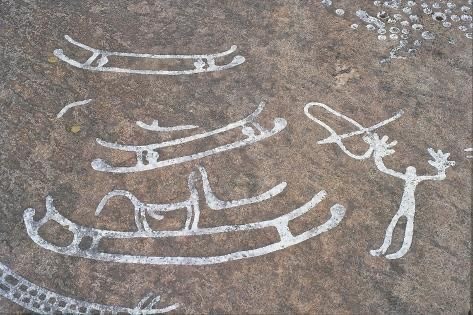
Petroglyphs have been made all around the world and in different eras. The word literally means “stone carving”.
Nordic petroglyphs are usually from the Bronze Age and are also called Hällristningar.
Some see part of the engravings as early runic symbols, but this theory is /can not be proven. Various meanings have been attested, such as territorial markings, recording (historical) events or tales, or possibly part of religious experience.
Many Nordic carvings have been painted for visibility reasons. None of these have been proven to be colored in at the time they were made.
Hällristningar are not part of the Viking age, but are often included into the Viking age by popculture. Examples of this are combining styles, decorations and time periods into tattoos or fake facts online.
Image: Tanum Petroglyphs
Found in: Litsleby, Västra Götaland - Sweden
#frankish#merovingian#viking archaeology#archaeology#carolingian#charlemagne#field archaeology#viking mythology#merovingian archaeology#germanic mythology#norse mythology#anglo saxon#viking#field archaeologist#frisian#odin#vikings#germanic#germanic folklore#germanic archaeology#wodan#anglo saxon archaeology#history#jewelry#norse#nordic bronze age#Bronze Age
28 notes
·
View notes
Text
Blorbo from my Bronze Age religious symbolism
3 notes
·
View notes
Text
youtube
16 notes
·
View notes
Photo

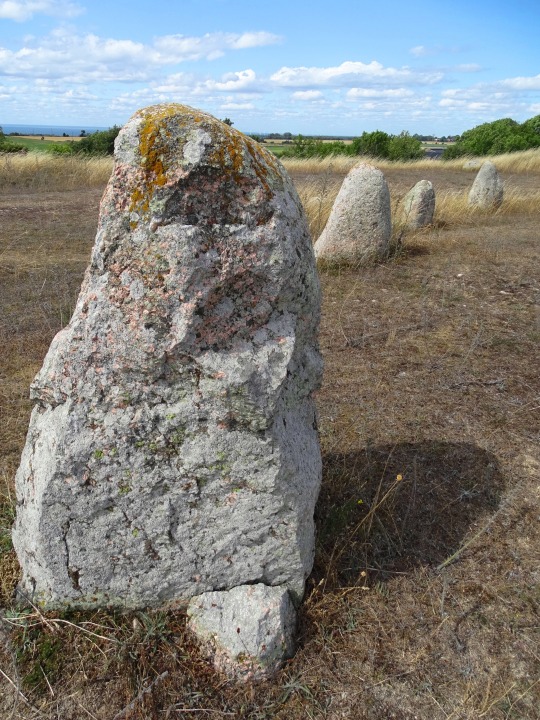
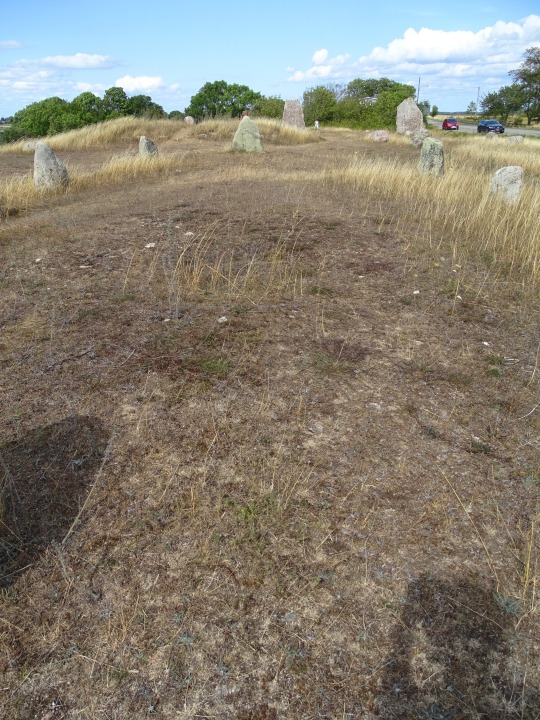
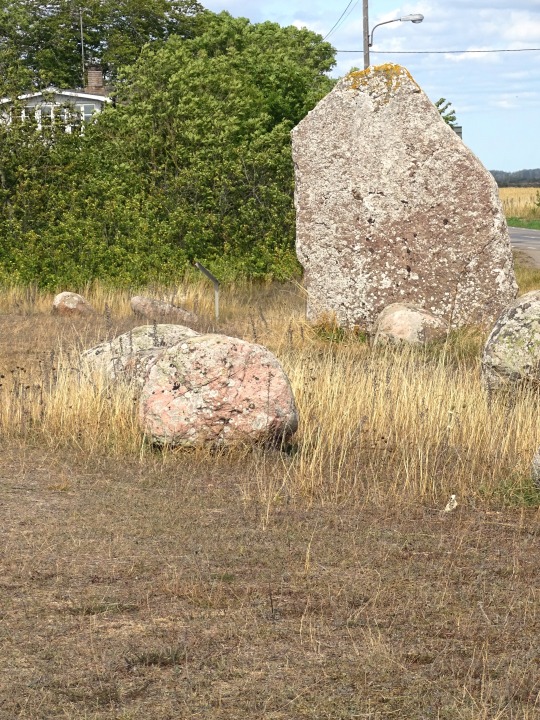
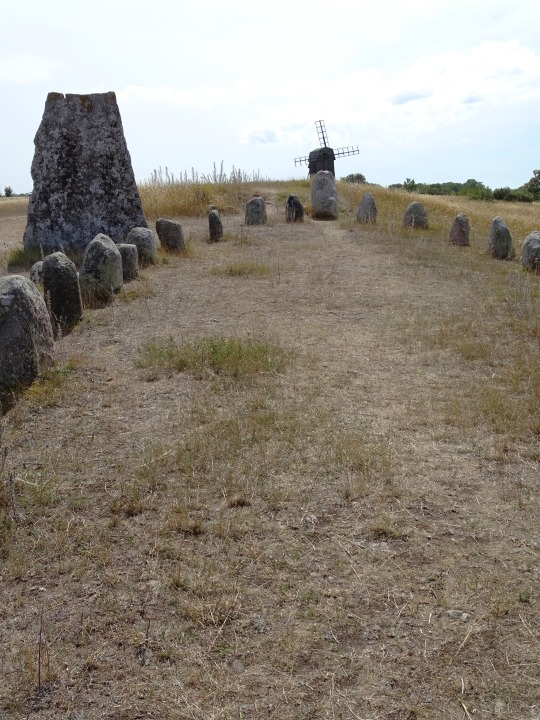
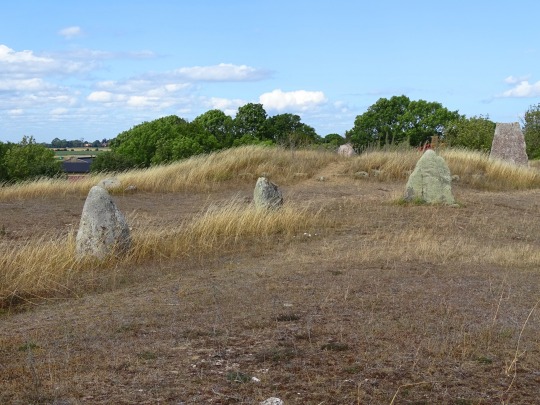


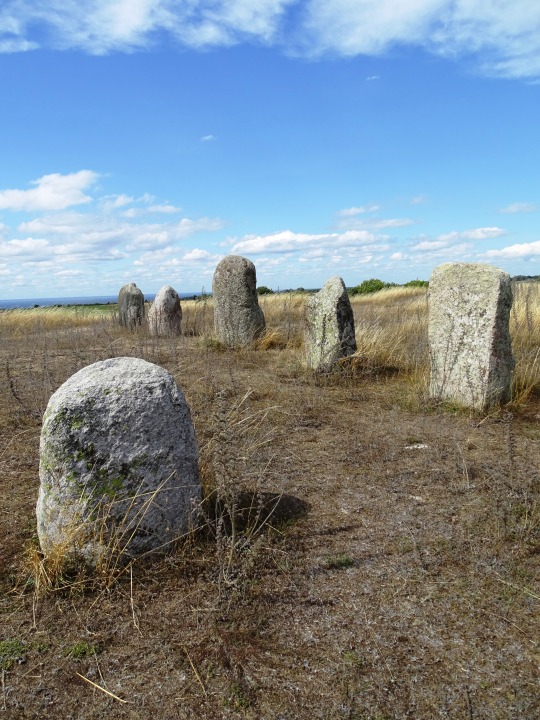

Grave Field Gettlinge, Sweden (No. 5)
Gettlinge burial ground is an ancient monument in Södra Möckleby parish on southern Öland. The burial ground is one of the largest on Öland, with a length of almost two kilometers. It is located along the island's western road between the villages of Gårdstorp, Gettlinge and Klinta.
The burial ground was described by historian Johannes Haquini Rhezelius in his "Monumenta runica", from 1634. He drew of the ship's setting in his travel diary. Carl Linnaeus examined a tomb in 1741. The landscape depicter Abraham Ahlqvist wrote about the place in 1825. He was particularly interested in the two three-metre-high stones in Klinta.
The line of prehistoric cultural remains begins north of Gettinge village. Many have been destroyed by quarries or by treasure seekers. In the burial ground there were about 250 graves. Today, more than 200 remain. Most of them are stone settings from the Late Bronze Age and Iron Age. In square or round stone circles, stone coffins with unburned skeletons have been found. The northern part of the field is most diverse. The large limestone slabs there have been erected to mark the significance of the site. On an impressive, 30-meter-long ship's settlement, which consists of 23 erected granite blocks next to each other, there are about twenty bowl pits. Bowl pits are a recurring motif on stones from the Bronze Age.
Around 1900, 15 graves were examined in Gettlinge. They were only men's graves, some contained weapons but most were looted. The best preserved tomb consisted of ten limestone slabs and a double layer of covering stones. The deceased had been laid in the grave along with his dog, two spears, a shield and spurs. This tomb form is from the first century after Christ. The burial ground was utilized for 2000 years from 1000 BC to 1050 AD.
On the west side of the island there are several burial grounds. The largest, with about 300 graves, is located in Ås at Ottenby. Another large field is located at Mysinge.
Source: Wikipedia
#Grave Field Gettlinge#Viking stone ship burial ground#Nordic Bronze Age#Route 136#Stora Alvaret#landscape#countryside#Kalmar Strait#Sweden#Kalmar County#stone#lichen#flora#meadow#original photography#travel#vacation#summer 2020#tourist attraction#landmark#free admission#Sverige#Scandinavia#Northern Europe#windmill#archaeology
27 notes
·
View notes
Text
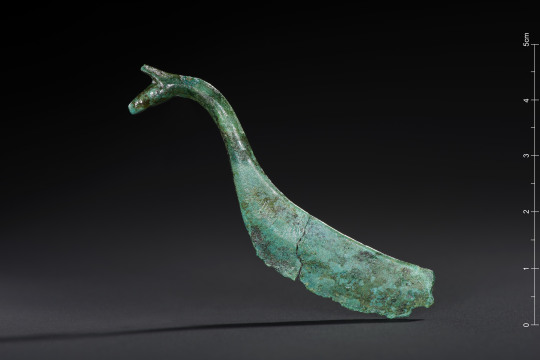
Knife
Early Bronze age knife with animalistic handle. Found in Gunnarshaug in Karmøy, Norway.
Photo:
B5952 (unimus)
23 notes
·
View notes
Text
youtube
Christian Jürgensen Thomsen
Friday 29 December 2023 was the 235th anniversary of the birth of Christian Jürgensen Thomsen (29 December 1788 – 21 May 1865), who was born in Copenhagen, Denmark, on this date in 1788.
Quora: https://philosophyofhistory.quora.com/
0 notes
Text

Norse Bronze Matron Set
Inspired by @vroshii's Egtved dress and using the mesh and texture of the disk found on this dress, I have made a version for more matronly sims. Also, a layered necklace, and matching bracelets. Thank you vro for your open TOU!
There are a few swatches for the dress, but they are variations of brown, gray, and white undyed wool. Although the Bronze Age Norsemen had access to materials that could produce dye, there is zero evidence that they actually dyed their clothes before the start of the Iron Age. They were, however, experts at metalsmithing, hence the magnificent jewelry.
Norse Bronze Matron Dress
Full body category (long dress)
Base game compatible
7 swatches
Disallowed for random
Feminine
Norse Bronze Shield Necklace
Necklace category
Base game compatible
5 swatches
Disallowed for random
Feminine
Norse Bronze Coiled Bangles
Left wrist category
Base game compatible
5 swatches
Disallowed for random
Feminine
DRESS DOWNLOAD - Dropbox (no ads)
NECKLACE DOWNLOAD - Dropbox (no ads)
BRACELETS DOWNLOAD - Dropbox (no ads)
#my cc#my cas cc#ts4cc#ts4#s4cc#sims 4 cc#ts4 cc#ts4 history#ts4mm#sims 4#ts4 historical#s4mm#bronze age#ts4 cas#ts4 custom content#danish#denmark#scandinavian#norse#nordic#scandinavia#germanic#ancient history#ts4 ancient history#ts4 dress#ts4 jewelry#ts4 accessories#ts4 necklace#ts4 bracelet#the sims 4
214 notes
·
View notes
Text

Boys at a prehistoric rock carving from the Bronze Age (1800–500 B.C.) in Stora Herrebro, Norrköping (Borg), Östergötland, Sweden, 1924. Swedish National Heritage Board.
60 notes
·
View notes
Video
youtube
ANCIENT SUN CULT in a Nordic Bronze-Age Tomb - Kivik
The rock art from the tomb of Bredarör at Kivik in Sweden is a window into the forgotten world of the Nordic Bronze Age. In this film I interpret all the esoteric imagery, including; sun-wheels, solar crosses, war chariots, armed warriors and ritual axes and boats. With the latest archaeological data, 3D scans and new CGI animations of the art, this film gives a new perspective on a tomb which is 3400 years old!
30 notes
·
View notes
Text

The Bjørnstad Ship
Carved nearing the end of the end of the Nordic bronze age Ca 1000-500 Bce. Back then it would have been on a beach to a fjord that has long since disappeared. Now it stands in a field right outside of Sarpsborg in Norway.
The middle ship is likely the largest petroglyph in northern Europe, at 4,4 meters long and 1.5 meters high. The other two are around 1 meter long and a little bit further down the wall.
#petroglyph#rock carving#bronze age#archaeology#rock art#petroglyphs#norway#prehistoric#Prehistoric art#northern bronze age#nordic bronze age#boat#ship#sarpsborg#prehistory
47 notes
·
View notes
Text

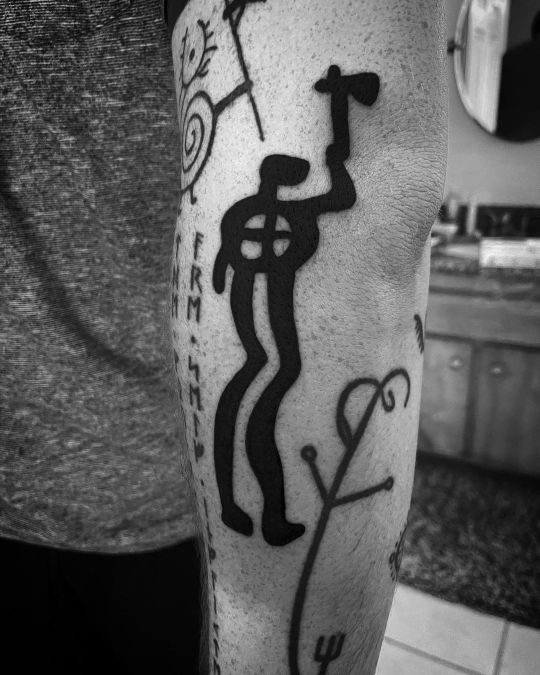
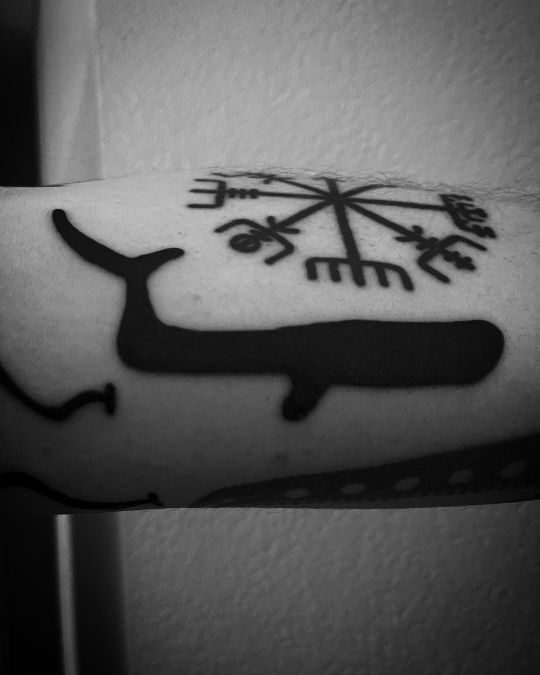

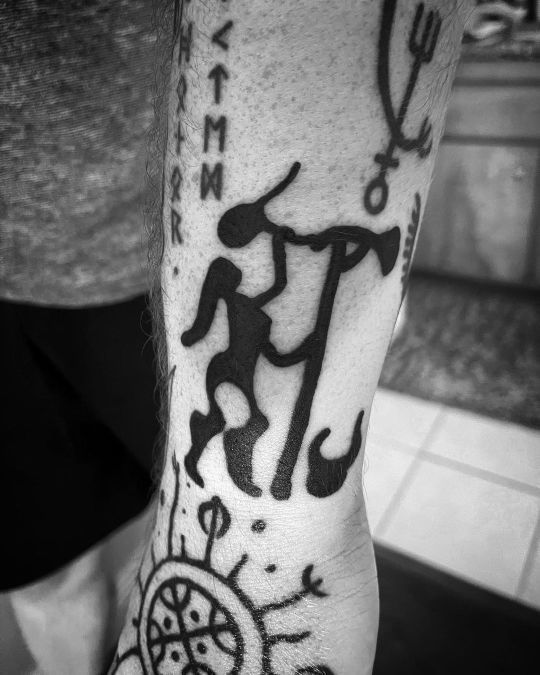
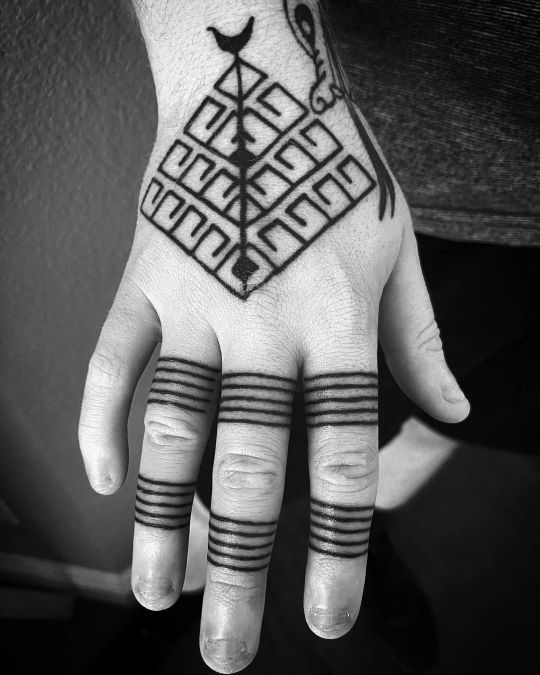
ᚻᛖᚨᚦᛖᚾ
#heathen#heathenry#heathenism#tattoo#tattoos#norse#nordic#nordic tattoos#norse tattoos#viking tattoos#bronze age petroglyphs#men with tattoos#heathen art
79 notes
·
View notes
Text
The Bjørnstad Ship petroglyph in Norway offers a glimpse into the Nordic Bronze Age! This enigmatic carving is the largest in N. Europe, depicting a sleek longship with 40+ rowers and two smaller ships. It's considered a sacred sight and an instrument of seafaring, warfare, and survival in Nordic Bronze Age society.
35 notes
·
View notes
Photo

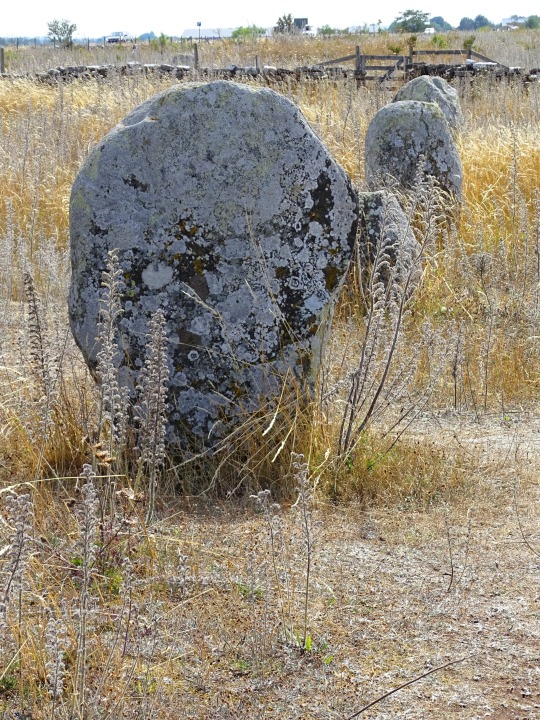

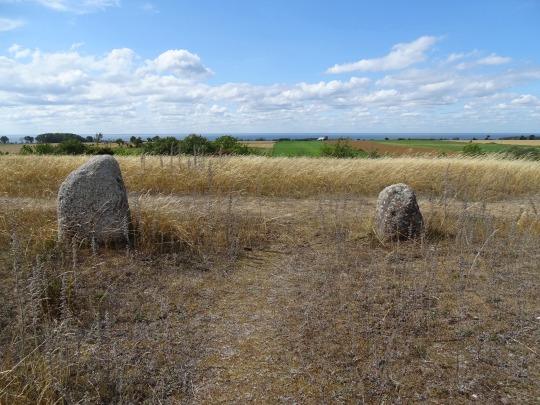
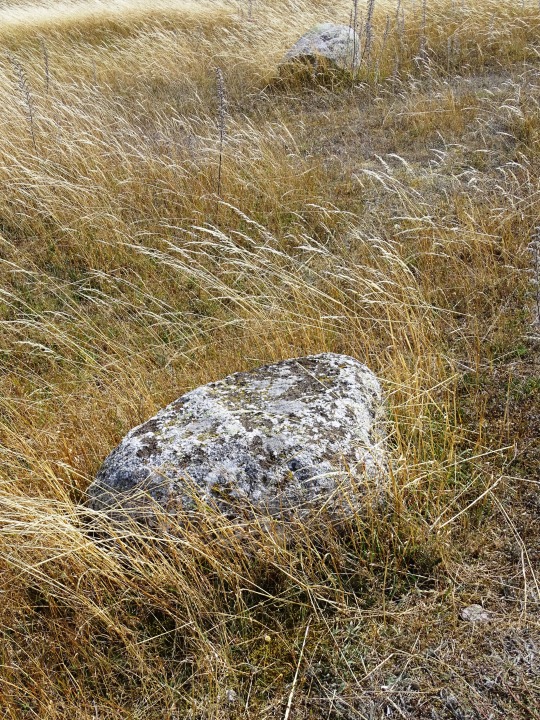


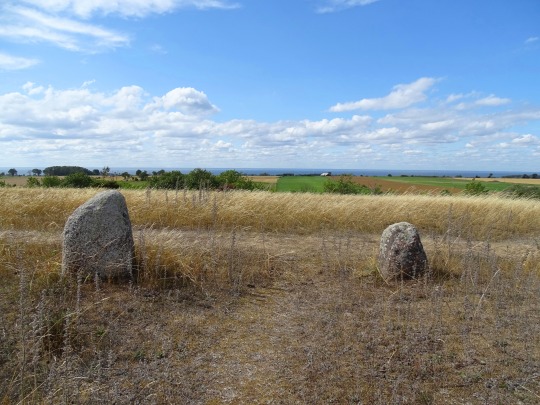


Grave Field Gettlinge, Sweden (No. 3)
The earliest settlers in Öland built early Stone Age wooden huts; the best examples of such excavated prehistoric dwellings are found a few miles to the east present village of Alby. Archaeological excavations conducted over a period of years in the latter 1900s have revealed evidence of bear, marten, seal and porpoise, but also elucidate Mesolithic hunting and gathering technologies through discovery of bone spears, elk antler harpoons and flint. These earliest inhabitants would have crossed the Kalmar Strait from the mainland toward the end of the last ice age, before the glacial cap had fully melted, and thus provided an ice bridge. The settlements of the Stone Age are key resources on Öland that led to the UNESCO designation of the Stora Alvaret as a World Heritage Site.
The principal evidence of life in the Gettlinge area from 1000 BC to 1000 AD is derived from the gravefields themselves. The Gettlinge Gravfeld is situated near the coast highway and contains some Bronze Age barrows as well as the more prominent stone ship burials, making it one of the largest gravefields on Öland. These burials span the late Bronze Age, Iron Age and Viking Age. Some of the individual standing stones are thought to predate the Viking era. Numerous artifacts have been recovered from gravefields elsewhere on Öland, including bronze chains and a bone needle case.
Viking graves have also been found at the Hulterstad Gravefield as well as the extensive Strandvalle Gravfeld, both on Oland. These findings imply that Gettlinge was a link within a chain of Viking settlements concentrated on the southern coasts of Öland, although most Viking settlements were actually found on the southeast of Öland having better access to the open sea.
Source: Wikipedia
#Grave Field Gettlinge#judge circle#Viking stone ship burial ground#vacation#Nordic Bronze Age#Stora Alvaret#Kalmar County#Öland#flora#meadow#landscape#countryside#tourist attraction#landmark#archaeology#travel#Swedish history#Sweden#Sverige#Scandinavia#Northern Europe#summer 2021#grass#free admission#Kalmar Strait#Baltic Sea#Kalmarsund#stone
3 notes
·
View notes
Text
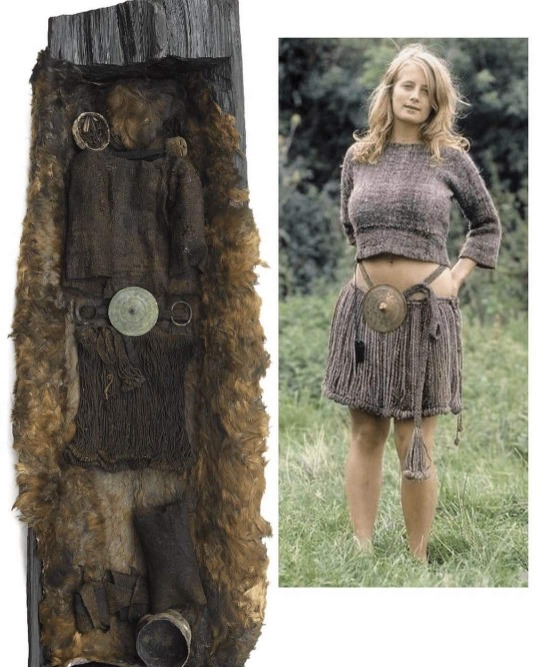
The Egtved Girl (1390–1370 BC), was a Nordic Bronze Age girl whose well-preserved remains were discovered outside Egtved, Denmark in 1921.
Visit blog:
https://artifactsmuseumhistory.blogspot.com
1K notes
·
View notes